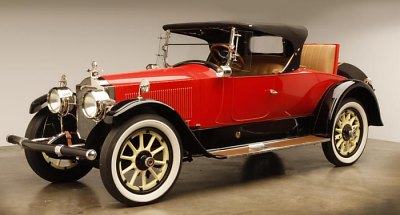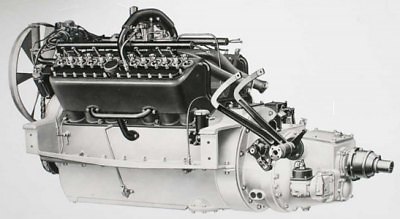 Few people remember
Packard, Pierce-Arrow and Peerless these days. Back in 1910s to 1930s,
they were the most prestigious car brands in the America, ones that
matched the very best Rolls-Royce. The Packard survived the longest
(until 1958), but its golden years remained to be the aforementioned
period, when it built a number of luxury models powered by V12 engines.
The 1915 Packard Twin Six was the first car bringing V12 into volume production. Before this, Packard's luxury cars employed large straight-six engines. Chief engineer Jesse Vincent realized that in order to enlarge the straight-six to achieve more power, the crankshaft would have to be extraordinarily long and heavy. It would also require a heavy flywheel. Ridiculously, by doubling the cylinder count to twelve, it could use a shorter and lighter crankshaft, lighter crankcase and flywheel. The result was reduced weight, enhanced smoothness and quietness. In this way, Vincent built a 7-liter V12 by mating two straight-six at 60 degrees (to ensure even firing) to a common crankshaft. Contrasting to contemporary practice, the 3-speed gearbox was mated to the engine in a unitary construction instead of hanging at the rear axle. This enhanced rigidity and cut unsprung weight. The 85 hp V12 gave the hefty luxury car, which weighed between 1925 and 2118 kg depending on bodywork chosen, a top speed of 70 mph. Most important, its peerless refinement trumped its rivals, in particular the new V8-powered Cadillac. The Twin Six brought Packard a strong reputation as well as prosperous sales.  |